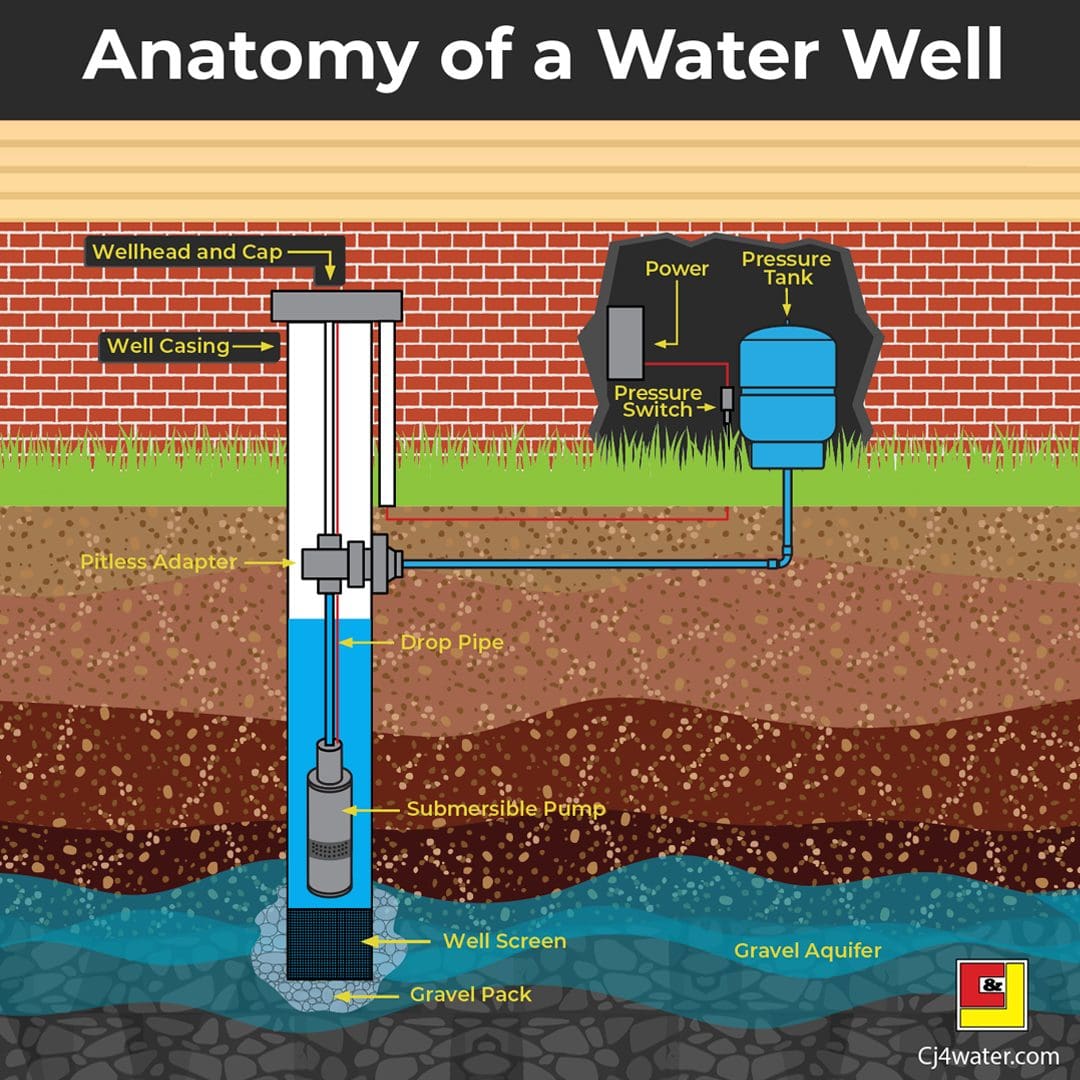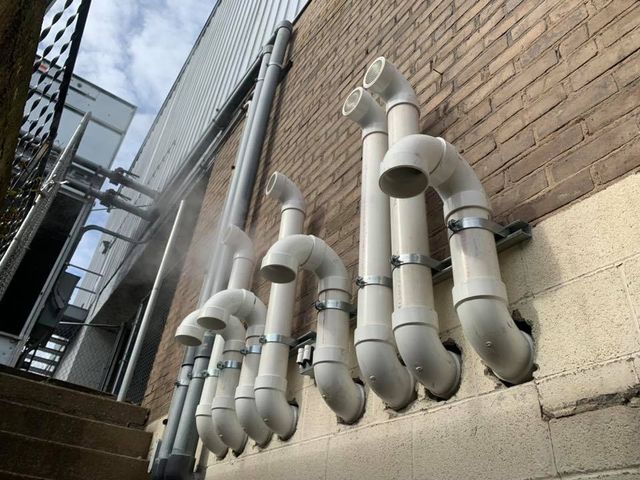Breaking Down The Anatomy of Your Home's Plumbing System
Breaking Down The Anatomy of Your Home's Plumbing System
Blog Article
What are your ideas regarding The Inner Workings of Your Home's Plumbing?

Understanding exactly how your home's pipes system functions is important for every house owner. From supplying tidy water for drinking, cooking, and bathing to safely removing wastewater, a well-maintained plumbing system is vital for your household's health and wellness and convenience. In this detailed overview, we'll check out the detailed network that composes your home's plumbing and offer pointers on upkeep, upgrades, and dealing with typical problems.
Introduction
Your home's plumbing system is greater than just a network of pipelines; it's a complex system that ensures you have accessibility to clean water and effective wastewater removal. Knowing its components and just how they collaborate can help you protect against pricey repair services and ensure every little thing runs efficiently.
Fundamental Parts of a Plumbing System
Pipelines and Tubing
At the heart of your plumbing system are the pipes and tubes that bring water throughout your home. These can be made of numerous materials such as copper, PVC, or PEX, each with its advantages in regards to sturdiness and cost-effectiveness.
Components: Sinks, Toilets, Showers, etc.
Components like sinks, toilets, showers, and bath tubs are where water is made use of in your home. Comprehending just how these components link to the plumbing system assists in diagnosing problems and intending upgrades.
Shutoffs and Shut-off Factors
Shutoffs control the circulation of water in your pipes system. Shut-off shutoffs are vital during emergency situations or when you need to make fixings, permitting you to separate parts of the system without disrupting water circulation to the entire home.
Water Supply System
Main Water Line
The major water line links your home to the municipal water system or a personal well. It's where water enters your home and is dispersed to different fixtures.
Water Meter and Stress Regulator
The water meter measures your water usage, while a stress regulator makes certain that water flows at a risk-free stress throughout your home's plumbing system, protecting against damages to pipelines and fixtures.
Cold Water vs. Warm water Lines
Recognizing the distinction in between cold water lines, which provide water directly from the primary, and warm water lines, which lug warmed water from the hot water heater, assists in repairing and planning for upgrades.
Drainage System
Drain Pipes Pipes and Traps
Drain pipelines lug wastewater away from sinks, showers, and commodes to the drain or sewage-disposal tank. Traps prevent drain gases from entering your home and likewise catch particles that could create clogs.
Air flow Pipelines
Ventilation pipelines permit air into the water drainage system, preventing suction that might reduce drainage and create catches to empty. Appropriate air flow is important for preserving the honesty of your pipes system.
Significance of Proper Drain
Guaranteeing appropriate drainage avoids back-ups and water damages. Frequently cleaning up drains pipes and preserving traps can protect against expensive repair services and prolong the life of your pipes system.
Water Furnace
Kinds Of Water Heaters
Water heaters can be tankless or conventional tank-style. Tankless heating systems warmth water on demand, while storage tanks keep heated water for instant usage.
Updating Your Plumbing System
Factors for Upgrading
Upgrading to water-efficient fixtures or replacing old pipes can improve water quality, reduce water bills, and enhance the value of your home.
Modern Plumbing Technologies and Their Benefits
Discover modern technologies like smart leak detectors, water-saving bathrooms, and energy-efficient water heaters that can save cash and decrease ecological effect.
Cost Factors To Consider and ROI
Calculate the upfront costs versus long-term savings when considering pipes upgrades. Many upgrades spend for themselves via minimized energy costs and fewer repair work.
How Water Heaters Link to the Plumbing System
Comprehending how hot water heater attach to both the cold water supply and warm water distribution lines helps in diagnosing issues like insufficient warm water or leakages.
Maintenance Tips for Water Heaters
Regularly flushing your water heater to eliminate sediment, examining the temperature setups, and checking for leakages can prolong its life expectancy and enhance energy efficiency.
Common Pipes Concerns
Leaks and Their Causes
Leakages can take place because of aging pipelines, loosened fittings, or high water stress. Attending to leaks promptly prevents water damages and mold and mildew growth.
Clogs and Clogs
Clogs in drains pipes and bathrooms are often brought on by flushing non-flushable things or an accumulation of grease and hair. Making use of drain displays and bearing in mind what goes down your drains pipes can prevent obstructions.
Signs of Pipes Issues to Look For
Low water stress, sluggish drains pipes, foul odors, or unusually high water costs are indications of potential pipes troubles that must be dealt with promptly.
Plumbing Upkeep Tips
Routine Inspections and Checks
Set up yearly plumbing evaluations to catch concerns early. Search for signs of leakages, deterioration, or mineral build-up in faucets and showerheads.
Do It Yourself Maintenance Tasks
Straightforward jobs like cleansing faucet aerators, looking for commode leaks using color tablets, or shielding subjected pipes in chilly environments can protect against significant pipes problems.
When to Call a Specialist Plumbing
Know when a pipes issue needs specialist knowledge. Trying complicated repairs without appropriate understanding can cause more damages and higher repair service prices.
Tips for Reducing Water Usage
Basic practices like dealing with leakages promptly, taking shorter showers, and running full loads of laundry and meals can preserve water and reduced your utility costs.
Eco-Friendly Plumbing Options
Take into consideration sustainable plumbing products like bamboo for flooring, which is durable and environment-friendly, or recycled glass for kitchen counters.
Emergency Readiness
Actions to Take During a Plumbing Emergency
Know where your shut-off valves are located and how to shut off the water in case of a ruptured pipe or significant leak.
Relevance of Having Emergency Situation Get In Touches With Handy
Maintain contact info for regional plumbing professionals or emergency services easily offered for quick reaction throughout a pipes dilemma.
Ecological Influence and Conservation
Water-Saving Fixtures and Home Appliances
Setting up low-flow taps, showerheads, and toilets can considerably minimize water usage without compromising efficiency.
DIY Emergency Fixes (When Appropriate).
Momentary repairs like making use of air duct tape to patch a leaking pipe or positioning a bucket under a leaking faucet can reduce damage up until an expert plumber arrives.
Conclusion.
Understanding the makeup of your home's pipes system equips you to preserve it properly, conserving money and time on repair work. By complying with regular maintenance regimens and remaining informed about modern-day pipes modern technologies, you can ensure your plumbing system operates efficiently for several years to find.
HOW YOUR PLUMBING SYSTEM WORKS
Which Pipes Do What?
Blue lines = fresh water supply entering the building Red lines = hot water supply entering the building Grey lines = pipes carrying waste away from the building and venting pipes carrying gases away from the building (through the roof) YOUR MAIN PLUMBING SYSTEMS
There are two main plumbing systems that support your home s basic plumbing needs one that brings clean water into your home, and one that sends dirty water away from your home. Connected to the toilet, bath, shower, and other faucets in your home, these two systems keep your water flowing in the right directions.
ACCESSING FRESH WATER
Fresh and clean water is brought into your home through the main water supply line . Filtered through one pipe, this water is pressured to flow into the various fixtures in your home at any given time.
This water can be sourced from a well located on your property, a pond or river (mostly cottages), or, as in most cases, from the city s municipal water treatment centre. However, it is important to note that water that is untreated, such as the water siphoned from ponds or rivers, may not be safe to drink. Personal water supplies always need to be treated for hardness and contaminants before consumed.
MUNICIPAL WATER SUPPLIES
Improve taste and odour Remove sediment Eliminate hardness Reduce chlorine COLD WATER SUPPLY VS. HOT WATER SUPPLY
Cold water flows into your home or building through the service line, which then distributes hot or cold water to your fixtures. This line is most commonly run through a central column that runs floor to floor. Hot water runs in short and straight pipes as the longer the pipeline, the more heat that will be lost in the transfer. Having shorter pipes also allows residents to access hot water more quickly.
WASTE WATER SYSTEM
Your wastewater system is divided into two parts pipes that send wastewater away from your home and venting pipes that send sewer gas away from your home. Sewage water travels through pipes that flush the water and waste towards local sewers that are operated and managed by your city or town. Most sewer systems rely on gravity to move the wastewater to where it needs to go.
The further away from your toilet or sink, the larger wastewater pipes become. This allows for waste to be disposed of from various parts of your home or business at once without pipe blockages. The angle and flow of these pipes are also essential for keeping your waste pipes clear of build up.
https://harrisplumbing.ca/how-your-home-plumbing-system-works/

I stumbled upon that review about Understanding Your Home's Plumbing Anatomy while doing a search on the search engines. Do you know about somebody who is occupied with the niche? Do not hesitate to promote it. We truly appreciate your readership.
Click Here Report this page